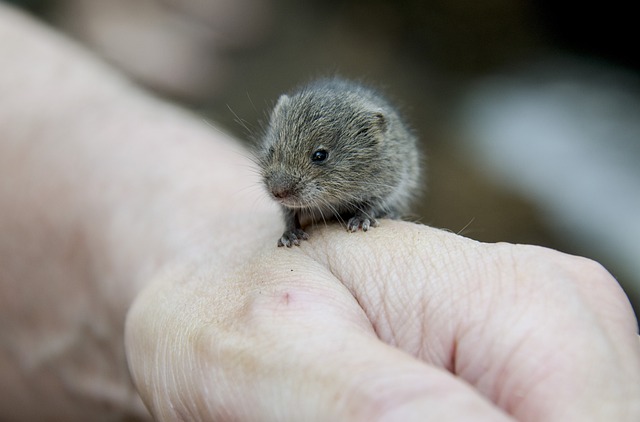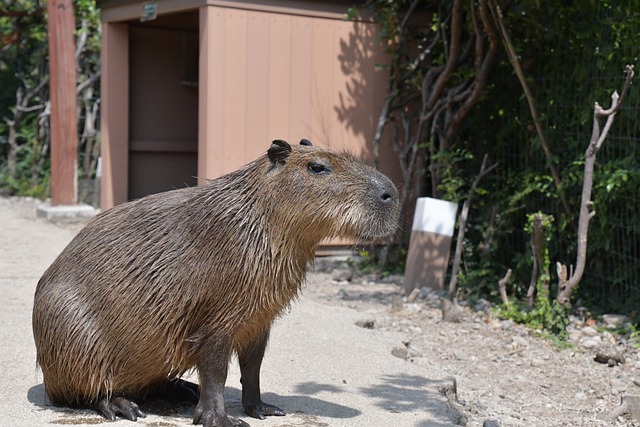Hamsters are beloved pets that bring joy and companionship to their owners. Unfortunately, hamsters have a relatively short lifespan and may develop health issues as they age.
As a result, owners may find themselves in the difficult position of comforting a dying hamster.
While this can be a challenging and emotional experience, there are steps that owners can take to provide comfort and support to their beloved pets.
One of the most important things owners can do when comforting a dying hamster is to provide a calm and peaceful environment.
This can be achieved by reducing noise and activity in the hamster’s living space and providing a warm and comfortable place for the hamster to rest.
Additionally, owners may want to consider providing soft bedding and extra treats to help make the hamster more comfortable.
Another critical aspect of comforting a dying hamster is providing emotional support. This can include spending time with the hamster, talking to them in a soothing voice, and offering gentle physical contact such as stroking their fur.
Owners may also want to consider seeking support from friends or a veterinarian to help them cope with the emotional challenges of caring for a dying pet.
Comforting Techniques
Creating a Comfortable Environment
When a hamster is dying, it is essential to create a comfortable environment. This includes providing soft and warm bedding and a quiet and peaceful space.
The hamster should be placed in a familiar area where they feel safe and secure. It is also essential to ensure the temperature is not too hot or cold, which can cause additional stress for the hamster.
Providing Emotional Support
Hamsters are social animals, and they crave companionship. When a hamster is dying, it is crucial to provide emotional support by spending time with them.
This can include holding them gently, soothingly, and reassuring them. It is essential to be patient and understanding, as the hamster may be in pain or discomfort.
Offering Favorite Foods
When a hamster is dying, they may lose their appetite. However, it is essential to offer their favorite foods to encourage them to eat.
This can include fresh fruits and vegetables and their regular food. It is important to avoid feeding them anything that may upset their stomach, such as sugary or fatty foods.
In conclusion, comforting a dying hamster involves creating a comfortable environment, providing emotional support, and offering their favorite foods. It is essential to be patient and understanding during this difficult time.
Consulting a Vet
When comforting a dying hamster, consulting a vet can be crucial. A vet can provide professional advice and help you make informed decisions about your hamster’s care.
Seeking Professional Advice
If you notice that your hamster is dying, it is essential to seek professional advice as soon as possible.
A vet can help you determine the best course of action for your hamster’s care and guide you on keeping your pet comfortable during its final days.
During your visit, the vet may perform a physical examination to assess your hamster’s overall health and identify any underlying health issues contributing to its decline.
They may also recommend medications or treatments to help manage your hamster’s symptoms and comfort them.
Discussing Euthanasia Options
In some cases, euthanasia may be the most humane option for a dying hamster. If your hamster is suffering and there is no hope for recovery, your vet may recommend euthanasia to end their suffering.
It is essential to discuss euthanasia options with your vet and make an informed decision about your hamster’s care. Your vet can provide you with information about the euthanasia process and help you understand what to expect.
Overall, consulting a vet can be crucial in comforting a dying hamster. A vet can provide professional advice and help you make informed decisions about your hamster’s care, including discussing euthanasia options if necessary.
Coping with Loss
Preparing for the Inevitable
When a hamster is nearing the end of its life, it can be challenging to know how to prepare for the inevitable. One of the most important things is ensuring the hamster is as comfortable as possible.
This may involve providing a soft, warm bed, ensuring the hamster has access to plenty of water, and offering it its favorite foods.
It is also essential to prepare yourself emotionally for losing your pet. This may involve talking to friends or family members about your feelings, seeking support from a therapist or counselor, or finding a support group for pet owners who have experienced similar losses.
Grieving Process
The grieving process can differ for everyone, and there is no right or wrong way to grieve. Some people may find comfort in creating a memorial for their pet, while others may prefer to keep their memories private.
It is crucial to allow yourself to feel your emotions and take the time to grieve.
If you have children, it is essential to talk to them about the loss of their pet in an age-appropriate way. You may consider involving them in creating a memorial or saying goodbye to their pet.
Overall, coping with the loss of a pet can be a difficult and emotional experience. However, by preparing for the inevitable and allowing yourself to grieve in your way, you can find comfort and healing in the memories of your beloved pet.
Understanding Your Hamster’s Health
When a hamster is nearing the end of its life, it’s essential to understand its health condition. Here are some key things to keep in mind:
- Age: Hamsters typically live between 1.5 to 3 years. If your hamster is older than this, it may be nearing the end of its life.
- Appetite: A hamster’s appetite may decrease as they near the end of their life. If your hamster is not eating or drinking, it’s essential to provide them with water and food options that are easy to consume.
- Activity Level: Hamsters nearing the end of their life may become less active and spend more time sleeping. It’s essential to provide them with a comfortable and quiet environment.
- Breathing: If your hamster has difficulty breathing, it may indicate a respiratory infection or other health issue. It’s essential to seek veterinary care if this is the case.
- Pain: Hamsters may show signs of pain, such as hunching over or not moving much. It’s essential to provide them with a comfortable environment and avoid handling them too much.
Monitoring your hamster’s health closely and seeking veterinary care if necessary is essential. Providing your hamster with a comfortable and peaceful environment can help them feel more at ease during this difficult time.
Recognizing Signs of Illness
When comforting a dying hamster, recognizing signs of illness is crucial. Here are some common symptoms of illness to look out for:
- Lethargy: If your hamster seems to be sleeping more than usual or less active, it could be a sign of illness.
- Loss of Appetite: If your hamster is not eating or drinking as much as usual, it could be a sign of illness.
- Weight Loss: If your hamster is losing weight rapidly, it could be a sign of illness.
- Changes in Behavior: If your hamster behaves differently than usual, such as being more aggressive or timid, it could be a sign of illness.
- Breathing Problems: If your hamster has trouble breathing, it could indicate illness.
- Skin Problems: If your hamster has skin problems, such as sores or scabs, it could be a sign of illness.
If you notice these signs, you must immediately take your hamster to the vet. The vet will be able to diagnose the problem and provide treatment. Constantly monitor your hamster’s behavior and health, and seek medical attention if you notice anything unusual.









